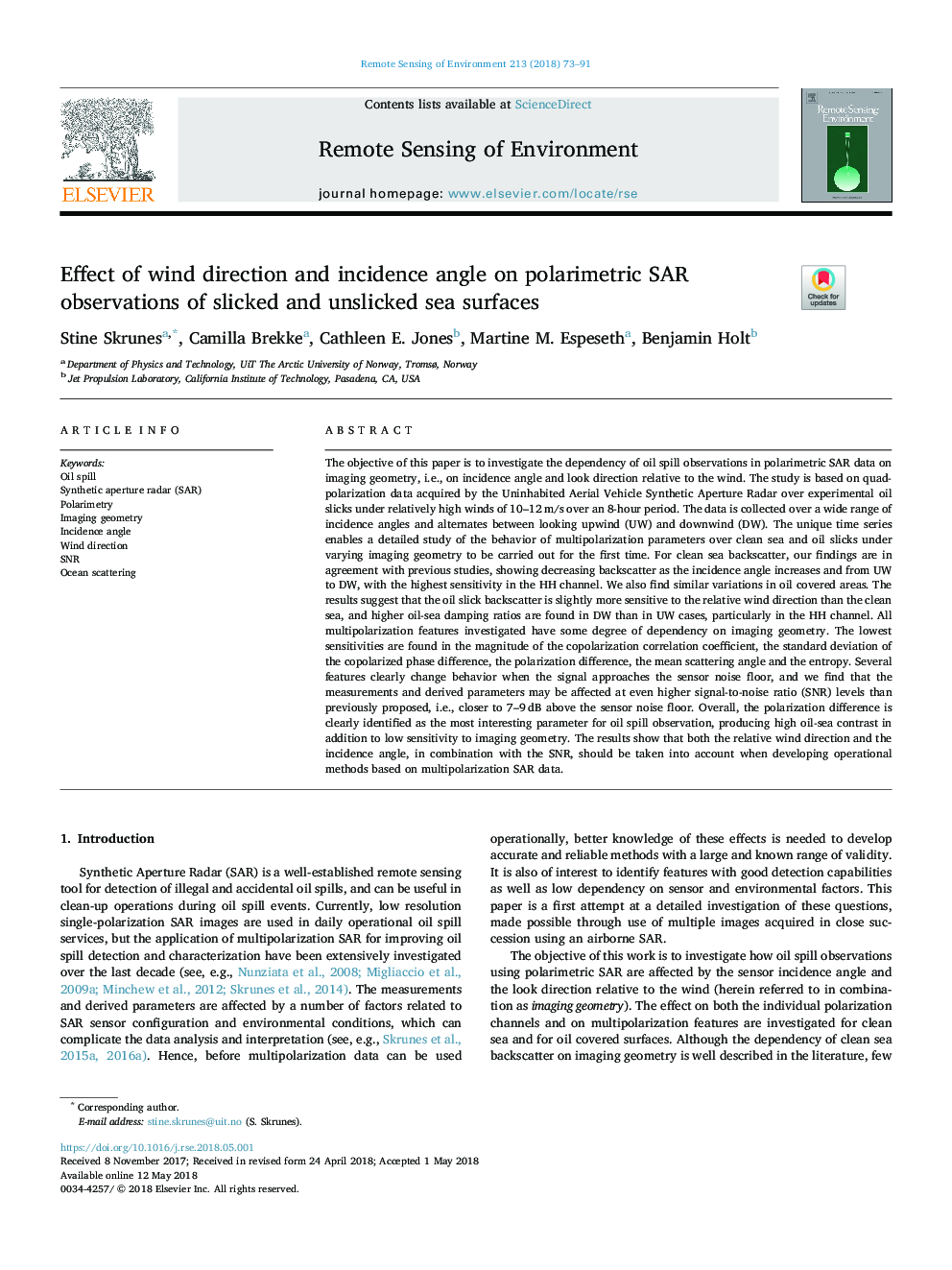| کد مقاله | کد نشریه | سال انتشار | مقاله انگلیسی | نسخه تمام متن |
|---|---|---|---|---|
| 8866512 | 1621187 | 2018 | 19 صفحه PDF | دانلود رایگان |
عنوان انگلیسی مقاله ISI
Effect of wind direction and incidence angle on polarimetric SAR observations of slicked and unslicked sea surfaces
دانلود مقاله + سفارش ترجمه
دانلود مقاله ISI انگلیسی
رایگان برای ایرانیان
کلمات کلیدی
موضوعات مرتبط
مهندسی و علوم پایه
علوم زمین و سیارات
کامپیوتر در علوم زمین
پیش نمایش صفحه اول مقاله

چکیده انگلیسی
The objective of this paper is to investigate the dependency of oil spill observations in polarimetric SAR data on imaging geometry, i.e., on incidence angle and look direction relative to the wind. The study is based on quad-polarization data acquired by the Uninhabited Aerial Vehicle Synthetic Aperture Radar over experimental oil slicks under relatively high winds of 10-12â¯m/s over an 8-hour period. The data is collected over a wide range of incidence angles and alternates between looking upwind (UW) and downwind (DW). The unique time series enables a detailed study of the behavior of multipolarization parameters over clean sea and oil slicks under varying imaging geometry to be carried out for the first time. For clean sea backscatter, our findings are in agreement with previous studies, showing decreasing backscatter as the incidence angle increases and from UW to DW, with the highest sensitivity in the HH channel. We also find similar variations in oil covered areas. The results suggest that the oil slick backscatter is slightly more sensitive to the relative wind direction than the clean sea, and higher oil-sea damping ratios are found in DW than in UW cases, particularly in the HH channel. All multipolarization features investigated have some degree of dependency on imaging geometry. The lowest sensitivities are found in the magnitude of the copolarization correlation coefficient, the standard deviation of the copolarized phase difference, the polarization difference, the mean scattering angle and the entropy. Several features clearly change behavior when the signal approaches the sensor noise floor, and we find that the measurements and derived parameters may be affected at even higher signal-to-noise ratio (SNR) levels than previously proposed, i.e., closer to 7-9â¯dB above the sensor noise floor. Overall, the polarization difference is clearly identified as the most interesting parameter for oil spill observation, producing high oil-sea contrast in addition to low sensitivity to imaging geometry. The results show that both the relative wind direction and the incidence angle, in combination with the SNR, should be taken into account when developing operational methods based on multipolarization SAR data.
ناشر
Database: Elsevier - ScienceDirect (ساینس دایرکت)
Journal: Remote Sensing of Environment - Volume 213, August 2018, Pages 73-91
Journal: Remote Sensing of Environment - Volume 213, August 2018, Pages 73-91
نویسندگان
Stine Skrunes, Camilla Brekke, Cathleen E. Jones, Martine M. Espeseth, Benjamin Holt,